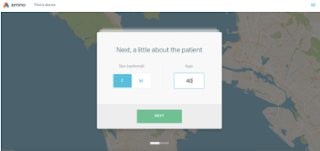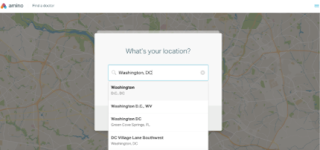The ADAP Advocacy Association does not engage in any political activities, political campaigns, ballot initiatives, or federal lobbying activities for that matter. Our purpose is strictly to raise awareness, offer patient educational programs, and foster greater community collaboration. That said, many stakeholders in our circles are concerned about the forthcoming inauguration of the 45th President of the United States, and the implications on the future of the AIDS Drug Assistance Programs ("ADAP"), as well as the "public safety net" generally.
On World AIDS Day, our organization issued a strong statement to the incoming president. Turning back the clock is not an option.
Speaking about my own personal politics in my role as the CEO of the ADAP Advocacy Association is something that I do rarely, because I learned long ago not to allow my own personal politics to influence my responsibilities to the organization, or the people represented by the organization. In full disclosure though, I was part of the #NeverTrump and #StopTrump movements during the Republican presidential primary. I had concerns about Donald J. Trump when he was a candidate in the Republican primary, and those concerns persisted during the general election. Furthermore, I continue to have concerns about him now that he is the President-Elect. But...I'm willing to heed the words from Hillary Clinton delivered during her concession speech, "We owe him an open mind and a chance to lead."[1]
But another politician (whose name I will not say) rationally said in 1986, "Trust, but verify."[2]
 |
| Photo Source: Associated Press |
In other words, I'm at the intersection between fear and hope. It is not a settling place because there are so many unknown pieces at play.
Ever since Trump's electoral win on November 8th, however, he has promised to repeal (and replace) the Affordable Care Act ("ACA") and thereby remove protections afforded to people living with HIV/AIDS; he has tapped a staunch anti-ACA congressman to lead the U.S. Department of Health & Human Services ("HHS") and thereby kill Medicaid expansion; he has deemed fit to select a man with no knowledge about housing policy to lead the U.S. Department of Housing & Urban Development ("HUD") and thereby potentially threatening important housing programs for our community (namely the Housing Opportunities for People with AIDS program, or HOPWA); and yet still he has not once uttered the words "HIV" or "AIDS since coming down that escalator in Trump Tower on June 16, 2015. The aforementioned are all red flags, but they don't even address his selection of the man who will be a heartbeat away from the Oval Office.[3] In other words, it stands to reason that the HIV/AIDS community is anxious about what lies ahead.
Ironically, patients — including people living with HIV/AIDS — may have something to be hopeful about because in an interview with TIME Magazine, President-Elect Trump put drug makers on notice over the rising cost of prescription drug prices. It was a warning to Wall Street that he repeated throughout the campaign trail.[4]
Trust, but verify! Right? Well...
It is incumbent upon the ADAP Advocacy Association, and its many various stakeholders to remain vigilant — especially during the Trump Administration's first 100 days in office, and the first year in office. It is important to remember that "Checks and Balances" remain, which makes reinforcing existing relationships with Members of Congress — and cultivating new ones — so important! And the latter has to be done with BOTH political parties, and not simply the one that you support. Sustain constant contact with the career civil servants working at HHS and HUD, among the many other federal departments and agencies. Engage at the state level by keeping open the lines of communication with governors and state legislators. But it is also equally important for stakeholders to maintain their composure during this process.
One thing is for certain...we have our work cut out for us! But remember that our community is strong, and we will persevere!
__________
[1] Vox, "Hillary Clinton’s concession speech full transcript: 2016 presidential election," November 9, 2016; available online at http://www.vox.com/2016/11/9/13570328/hillary-clinton-concession-speech-full-transcript-2016-presidential-election.
[2] Wikipedia, "Trust but verify," November 26, 2016; available online at https://en.wikipedia.org/wiki/Trust,_but_verify.
[3] Kaczynski, Andrew, BuzzFeed, "Here Is Mike Pence’s Questionable 2000 Proposal On HIV/AIDS Funding," July 14, 2016; available online at https://www.buzzfeed.com/andrewkaczynski/here-is-mike-pences-questionable-2000-proposal-on-hivaids-fu?utm_term=.cpRWEpXY9#.mfEmlovG9.
[4] Egan, Matt, CNN Money, "Trump warns Wall Street: I'm going to cut drug prices," December 7, 2016; available online at http://money.cnn.com/2016/12/07/investing/trump-drug-prices-time-man-year-biotech/index.html.














